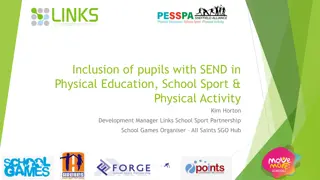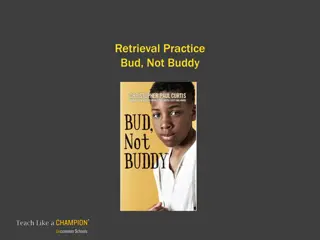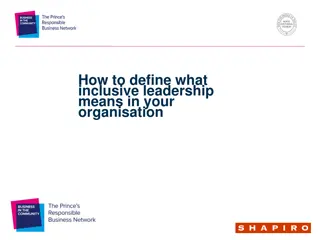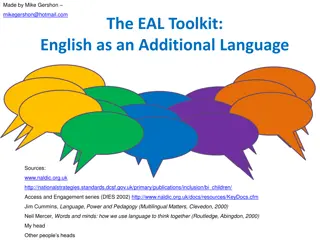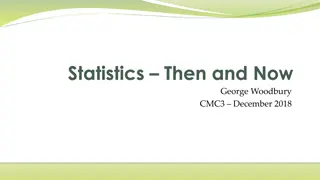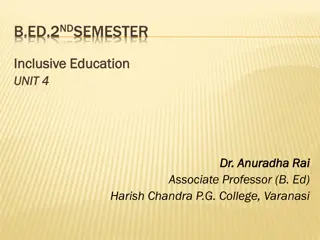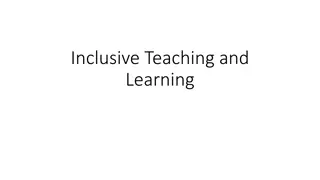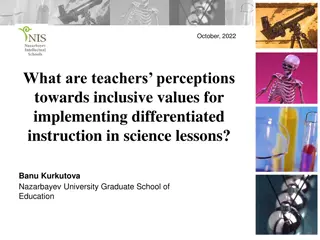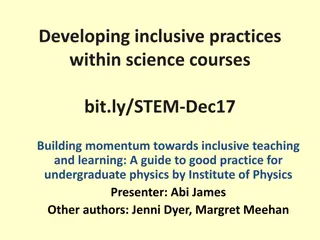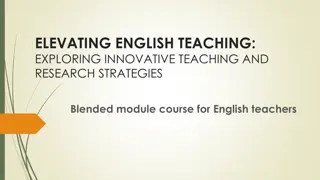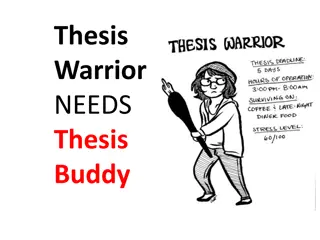Inclusive School Teaching-Learning Strategies: Buddy System with Seema Malik
"Explore the impact of the buddy system in inclusive education, helping children with different challenges blend seamlessly with typically developing peers. Learn how peer buddies offer support, advice, and friendship, enhancing self-esteem and fostering empathy and compassion."
Download Presentation

Please find below an Image/Link to download the presentation.
The content on the website is provided AS IS for your information and personal use only. It may not be sold, licensed, or shared on other websites without obtaining consent from the author. Download presentation by click this link. If you encounter any issues during the download, it is possible that the publisher has removed the file from their server.
E N D
Presentation Transcript
INCLUSIVE SCHOOL TEACHING- LEARNING STRATERGIES: BUDDY SYSTEM SEEMA MALIK ASSTT PROF SIER, MOAHALI
Being different from everyone else can both be a blessing and a curse. For children facing different challenges, sometimes considered as a burden. They may be challenged in some skills that their peers may find so easy to do that it is taken for granted. Some of these problematic skills are in the areas of communication and socialization. Fortunately, several interventions have been designed to help these children cope with their difficulties and blend with typically-developing children. One educational intervention that many schools are already adopting is Inclusion.
Buddy systems teach, and give children the opportunity to practice, the important values of respect, care, valuing difference, responsibility, friendship and including others. Through looking after and caring for smaller, vulnerable children who are just starting school, older children learn the skills associated with empathy and compassion through activities in the classroom and in the playground.
INTRODUCTION The interactive teaching and learning strategies are used to engage students in resilience and wellbeing. The strategies aim to promote critical and reflective thinking, research and evaluation skills that will help students to take positive action to protect, enhance and advocate for their own and other s health, wellbeing and safety. Students use personal and social capability to work collaboratively with others in learning activities
THE BUDDY SYSTEM MEANING The buddy system is a procedure in which two individuals, the "buddies operate together as a single unit so that they are able to monitor and help each other. buddies",
Peers are paired with students with disabilities who are there to support in school work, offer advices and just be a friend. The peer buddy is usually a student who is interested in providing support, who understands the requirements of the class, is comfortable with the subject matter and would like to bring the students with a disability into his or her circle of friends.
It boosts up the self esteem and competence of the mainstream student while making the child with special education needs feel accepted and supported by the peer.
BUDDY SYSTEM. The purpose of implementing a buddy system is to increase social interaction and appropriate play among children in your classroom. A peer buddy can help the child who has difficulty with transitions, difficulty remembering the rules and procedures of routines, or who seems to need a lot of peer attention
BENEFITS Through buddy system children learn to develop an awareness and respect for diversity. It develops interactional skills. It helps to develop deeper understanding of the task. Children may learn positive skills from their buddies. It helps in building friendship ties and interpersonal relationships. Helps in improving learning skills. Makes independent and confident. Develop social skills.
RESPONSIBILITIESOFAPEERBUDDY Treat everyone the same way as you yourself are, no matter if he or she suffers a disability. Respect everyone. Develop true friendships Be a role model. Attend to confidentiality. Teach others in school Assist in school work. Inform the teacher about the problem.
ESSENTIALSFORSUCCESSFULIMPLEMENTATION OFBUDDYSYSTEM Be sure to match academically higher performing children with those that need more support. Provide clear directions regarding what support the buddy is providing. Make the buddy relationship reciprocal. Carefully observe and record the successes and challenges of the buddy system. Reinforce all participants for being good buddies. Rotate buddies throughout the session. The non-disabled students chosen as buddies should be selected with utmost care.




























